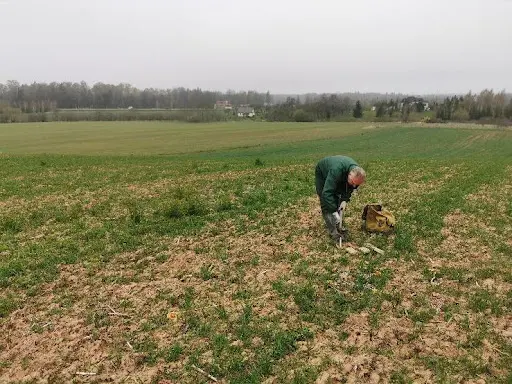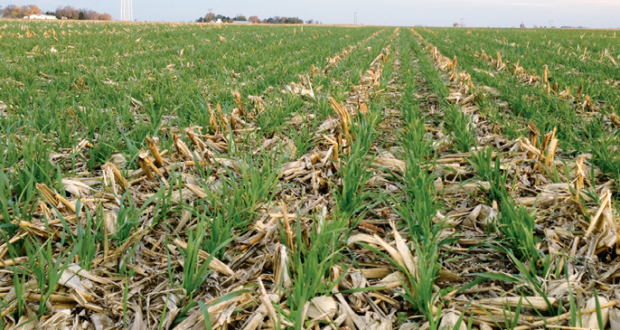Agriculture is one of the most critical global drivers of change with negative impacts on the environment (e.g., Biodiversity loss and climate change) and the ecosystem services supplied. It is essential to change agricultural practices and gradually reduce the application of conventional management (e.g., deep tillage, intensive use of agrochemicals), which increases land degradation.
It is essential to transition to more sustainable agriculture that improves soil quality, reduces biodiversity loss, and mitigates climate change (e.g., carbon sequestration). No-tillage farming is one of the viable options to increase carbon sequestration while producing food. The Heavy Impact Carbon project aims to support farmers in establishing sustainable practices to revert the land degradation process and increase carbon sequestration on soils. Currently, the project monitors 5000ha of agriculture areas in Lithuania, where no-tillage farming was established in 2017. In all the farms, it is envisaged to monitor soil organic carbon stocks using laboratory analysis and cutting-edge technologies (e.g., proximal and remote sensing analysis).
The Heavy Impact Carbon project monitors the impacts of no-tillage farming on three different soil depths (0-10, 10-20, and 20-30 cm) using the most recent laboratory procedures (Figure 1). A detailed analysis of the soil type was conducted in previous fieldwork. In the studied plots, sampling points are established in different soil types to understand the impacts of no-tillage farming on soil carbon stocks(Figure 2). Simultaneously to fieldwork, soil carbon stocks will also be estimated using satellite images and taken in the field using drones to have data with better resolution (Figure 2). The combination between field and remote sensing products is essential to monitor and have a complete and robust analysis of the potential of sustainable farming practices to increase carbon sequestration. Climate change is one of the biggest challenges we have ahead, and sustainable agriculture practices can contribute decisively to reducing the human carbon footprint. A transition to a sustainable future is needed, and making agriculture a sustainable project is paving the way.
From April 18 to 21, 2022, the first sampling procedures took place in Prienu county, the central part of Lithuania, on a farm of 220ha. The fields are not adjacent, so we observed various landscapes and surroundings. The farmer applies the no-till technology to manage the fields since 2017. The winter rye and wheat are the predominant vegetation, and some winter rapeseeds are. The vegetation on some fields was not very advanced; in other areas opposite. Vegetation intensiveness correlates with observation, soil samples, and spatial imagery. In early spring, there was not much precipitation, but the soil was dump, and easy to penetrate the core. We used the logs to record vegetation and weather conditions. Soil texture and structure were noted during the sampling procedure.
14 parcels of 65 composite samples were sampled from 3 layers of 0-10 10-20 and 20-30 cm, so 195 samples were sent to the lab to test organic soil carbon.




Figure 1. Fieldwork and sampling procedure.

Figure 2: A) Soil types and B) remote sensing index ((modified soil-adjusted vegetation index (MSAVI)) used to estimate soil organic carbon stocks of one of the monitored farms.



